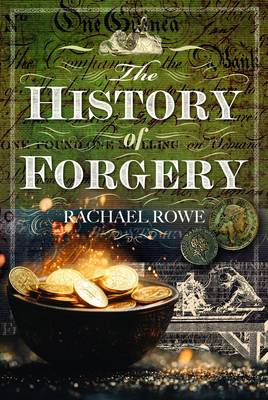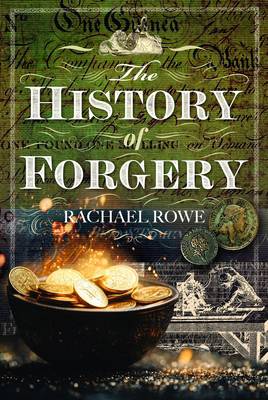
Je cadeautjes zeker op tijd in huis hebben voor de feestdagen? Kom langs in onze winkels en vind het perfecte geschenk!
- Afhalen na 1 uur in een winkel met voorraad
- Gratis thuislevering in België vanaf € 30
- Ruim aanbod met 7 miljoen producten
Je cadeautjes zeker op tijd in huis hebben voor de feestdagen? Kom langs in onze winkels en vind het perfecte geschenk!
- Afhalen na 1 uur in een winkel met voorraad
- Gratis thuislevering in België vanaf € 30
- Ruim aanbod met 7 miljoen producten
Zoeken
Omschrijving
From the flamboyant preacher accused of forgery to the fourteen year old burned at the stake for coining, the eighteenth century was rife with financial crime. This book outlines the stories of men and women accused and convicted of coining and forgery at a time when the death penalty was used for over 200 crimes and society was unforgiving.
When the British government decided to produce low value paper currency in 1797 to pay for the war with France they had overlooked the consequences of a population unfamiliar with banknotes. From 1797 to 1812 over 300 people went to the gallows. This book tells the story of some of these people. The schoolmaster pressed into the Royal Navy who turned forger on discharge. The exciseman who found himself out of pocket when whisky production was regulated and forged money to pay his bills. A coining gang holed up on a farm in Birmingham who ran a successful monetary enterprise until the law caught up with them. Finally, there's the architect who was transported to Australia for forgery whose face ended up on a (legal) banknote. All these characters and more give an insight into the crime of forgery in the eighteenth and early nineteenth centuries.
When Rachael Rowe discovered a forger in the family, her research took her on a journey to find out more about the crime and why people in the eighteenth century were intent on breaking the law. Using original records, the book highlights the scope of the crime and shows how national and global events combined to fuel an increase in forgeries with devastating effects for the criminals and their dependants.
When the British government decided to produce low value paper currency in 1797 to pay for the war with France they had overlooked the consequences of a population unfamiliar with banknotes. From 1797 to 1812 over 300 people went to the gallows. This book tells the story of some of these people. The schoolmaster pressed into the Royal Navy who turned forger on discharge. The exciseman who found himself out of pocket when whisky production was regulated and forged money to pay his bills. A coining gang holed up on a farm in Birmingham who ran a successful monetary enterprise until the law caught up with them. Finally, there's the architect who was transported to Australia for forgery whose face ended up on a (legal) banknote. All these characters and more give an insight into the crime of forgery in the eighteenth and early nineteenth centuries.
When Rachael Rowe discovered a forger in the family, her research took her on a journey to find out more about the crime and why people in the eighteenth century were intent on breaking the law. Using original records, the book highlights the scope of the crime and shows how national and global events combined to fuel an increase in forgeries with devastating effects for the criminals and their dependants.
Specificaties
Betrokkenen
- Auteur(s):
- Uitgeverij:
Inhoud
- Aantal bladzijden:
- 224
- Taal:
- Engels
Eigenschappen
- Productcode (EAN):
- 9781399055987
- Verschijningsdatum:
- 30/03/2026
- Uitvoering:
- Hardcover
- Formaat:
- Genaaid
- Afmetingen:
- 159 mm x 235 mm

Alleen bij Standaard Boekhandel
+ 96 punten op je klantenkaart van Standaard Boekhandel
Beoordelingen
We publiceren alleen reviews die voldoen aan de voorwaarden voor reviews. Bekijk onze voorwaarden voor reviews.









